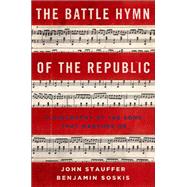
The Battle Hymn of the Republic A Biography of the Song That Marches On
by Stauffer, John; Soskis, Benjamin-

Free Shipping on all Orders Over $35!*
*excludes Marketplace items.
Buy New
Rent Book
Rent Digital
Downloadable: 180 Days
Downloadable: 365 Days
Downloadable: Lifetime Access
Used Book
We're Sorry
Sold Out
This item is being sold by an Individual Seller and will not ship from the Online Bookstore's warehouse. The Seller must confirm the order within two business days. If the Seller refuses to sell or fails to confirm within this time frame, then the order is cancelled.
Please be sure to read the Description offered by the Seller.
Summary
Author Biography
John Stauffer is professor of English and American Literature and African-American Studies chair of the History of American Civilization program at Harvard. His books include Giants: The Parallel Lives of Frederick Douglass and Abraham Lincoln and The Black Hearts of Men: Radical Abolitionists and the Transformation of Race.
Benjamin Soskis is a Fellow at the Center for the Study of Nonprofit Management, Philanthropy, and Policy at George Mason University. He has taught at George Washington University and the University of California, Washington Center. His writing has appeared in The New Republic, the New York Times, and Slate.com.
An electronic version of this book is available through VitalSource.
This book is viewable on PC, Mac, iPhone, iPad, iPod Touch, and most smartphones.
By purchasing, you will be able to view this book online, as well as download it, for the chosen number of days.
A downloadable version of this book is available through the eCampus Reader or compatible Adobe readers.
Applications are available on iOS, Android, PC, Mac, and Windows Mobile platforms.
Please view the compatibility matrix prior to purchase.
